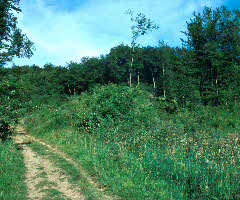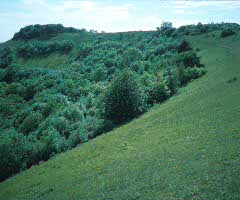Pearl-bordered Fritillary
Clossiana (Boloria) euphrosyne

| Home | The Butterflies of Gloucestershire | Species | Habitats | Conservation |
Pearl-bordered FritillaryClossiana (Boloria) euphrosyne |
 |
 |
| 28 May 1977 | 30 May 1976 |
Habitat
The main habitat for Pearl-bordered Fritillary in our area is
open woodland with Common Dog-violet Viola riviniana.
Suitable habitat has declined nationally and locally, where the
species is now confined to one area of commercial forestry and
a few other small colonies.
When they used to be more widespread in the Cotswolds, Pearl-bordered Fritillaries were quite often seen along the edges of unimproved grassland close to their woodland colonies. Scrubby grassland can support the species, and one colony in the area may be using this as breeding habitat.
 |
 |
 |
Conservation Issues
Lack of regular felling programmes has resulted in many Cotswold
colonies gradually dying out as their habitat has become too shaded
by maturing trees.
It is not known why the species died out in the Forest of Dean where there has been continuity of felling, and the Small Pearl-bordered Fritillary still survives.
Like several other scarce and beautiful butterfly species, the Pearl-bordered Fritillary is sometimes reared and released by enthusiasts in the hope of establishing new colonies.
|
Flight PeriodUsually from mid May to mid June, with periods of particularly warm or cool weather bringing the species out in early May or delaying its emergence. In some years there is a partial emergence followed by a period of cold weather. When the remainder emerge there is a strong contrast with the survivors from earlier, which by then can be very worn.The flight period overlaps with that of the Small Pearl-bordered Fritillary, and with their similar size and upperside markings there is scope for misidentification of one for the other. See the close-ups on the page for that species for an identification tip.
DistributionFormerly throughout the Cotswolds south of Cheltenham, the Forest of Dean, and in several other places. Now lost from the Dean area and most of the Cotswold woods.
| No map - species found in less than 20 tetrads |